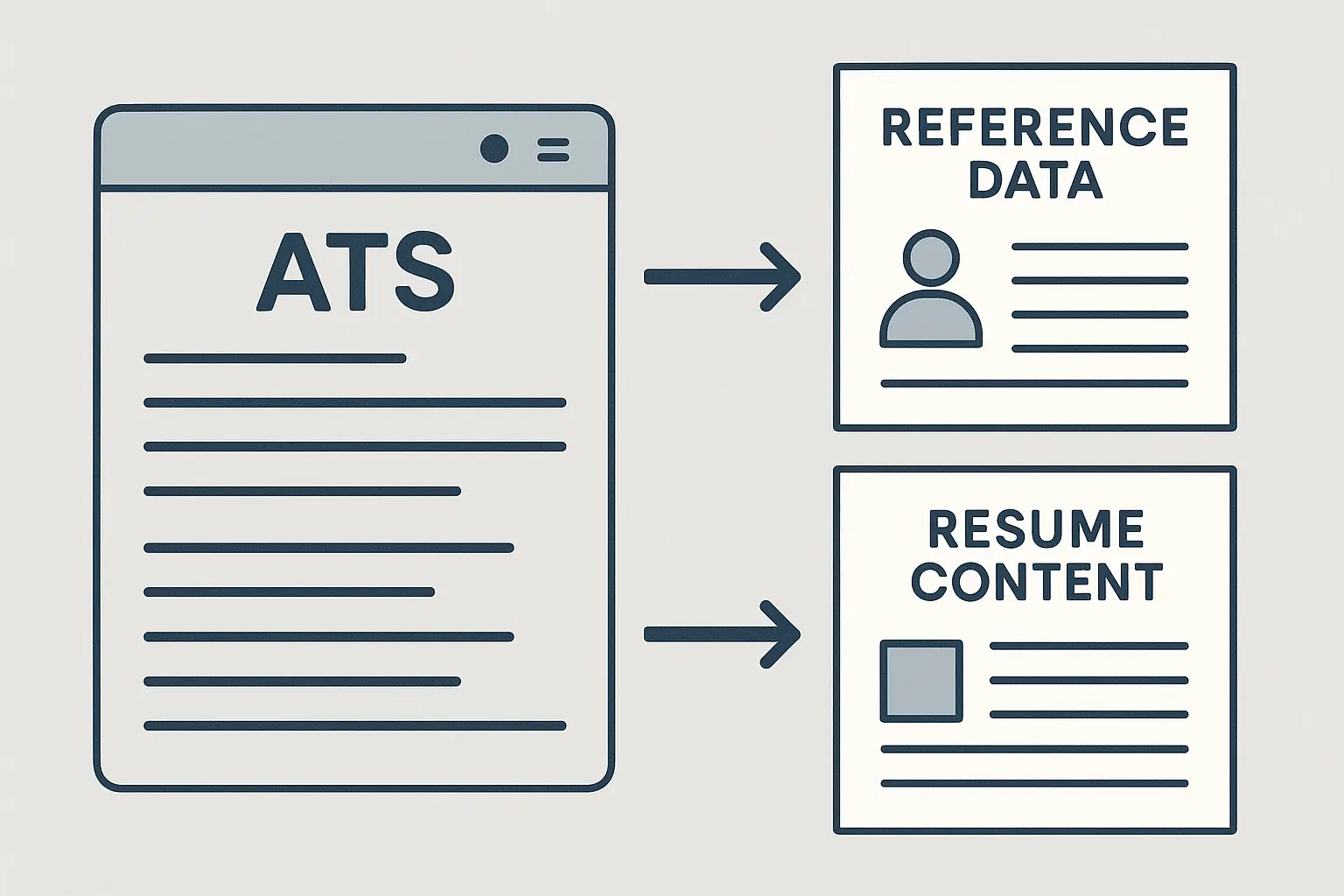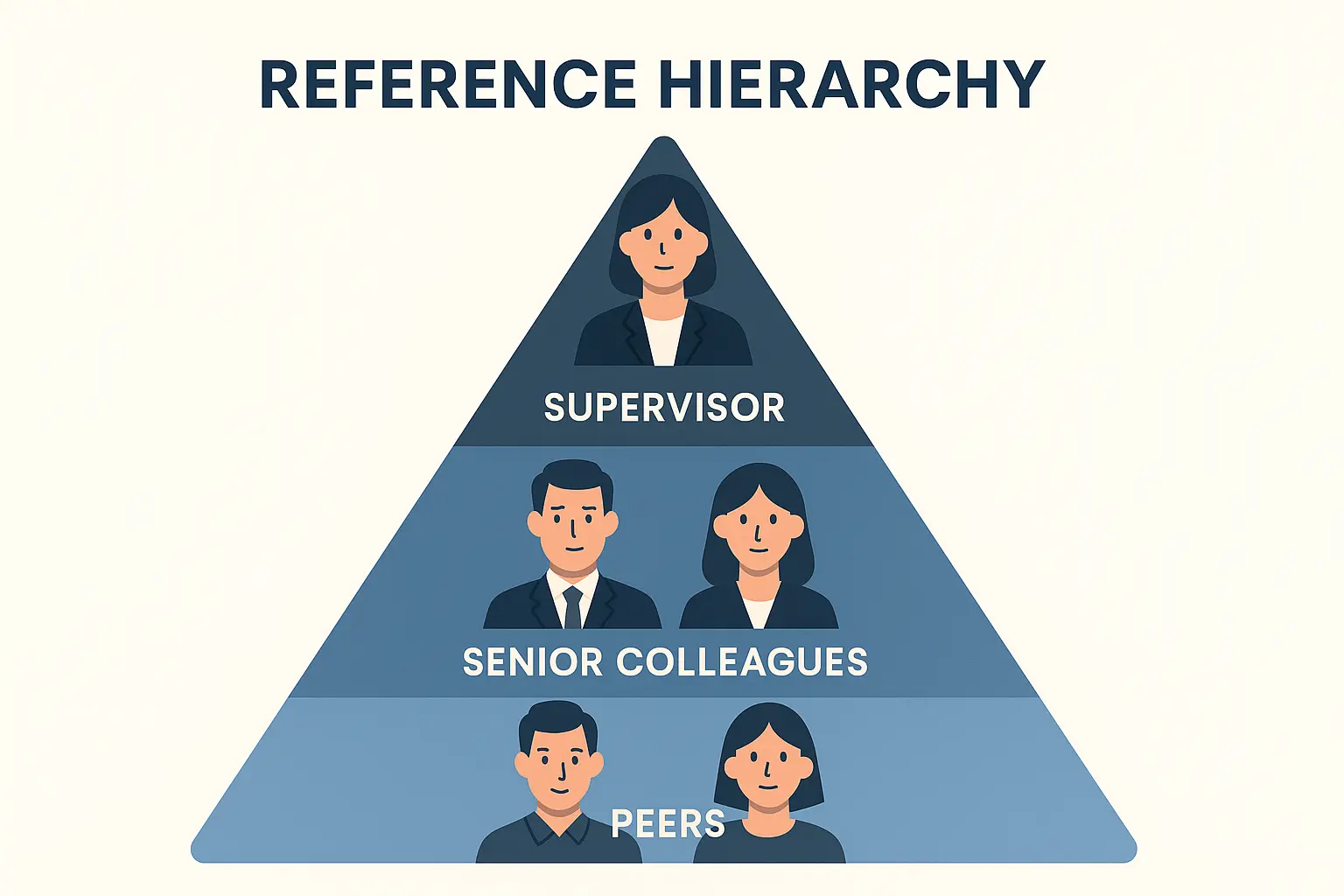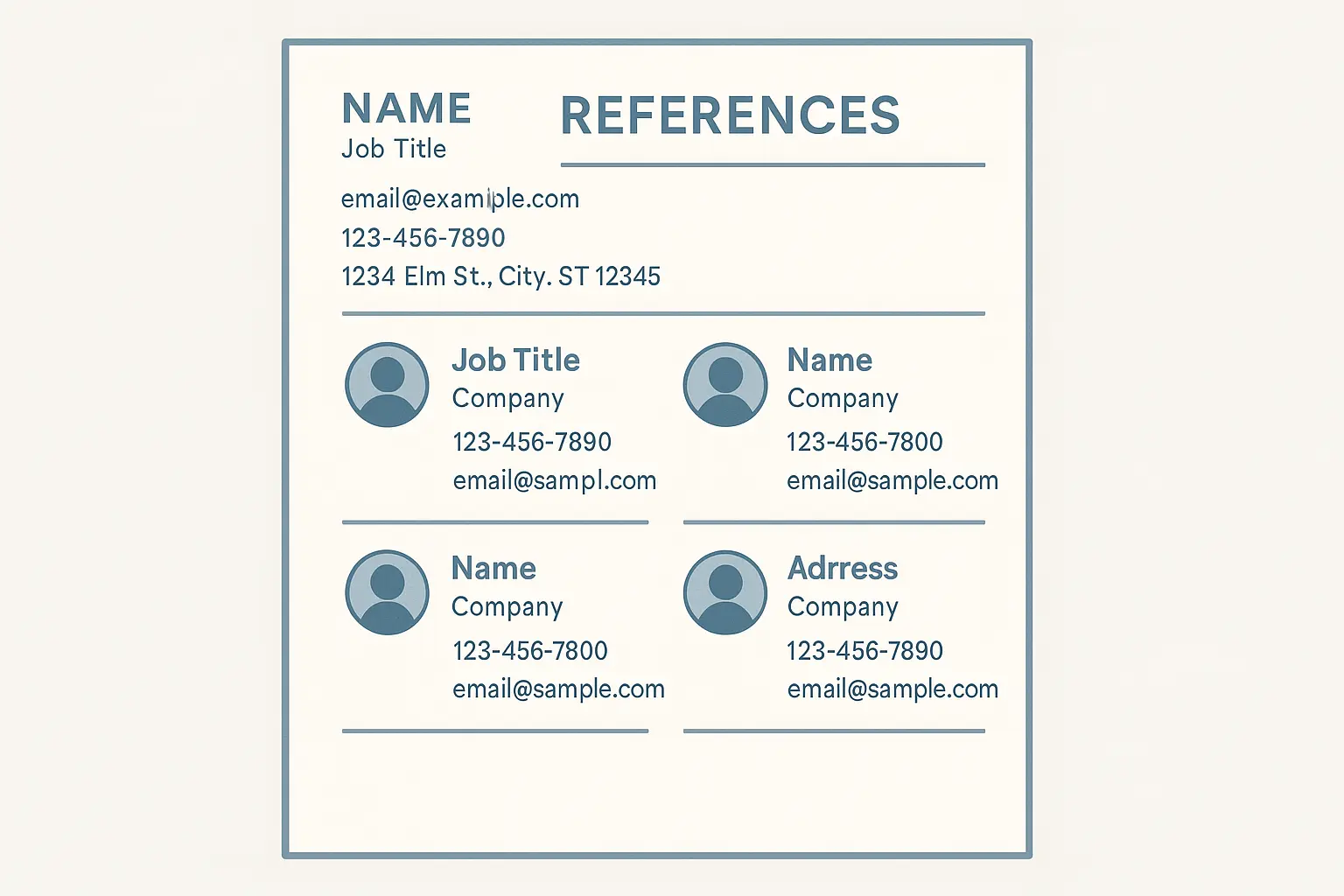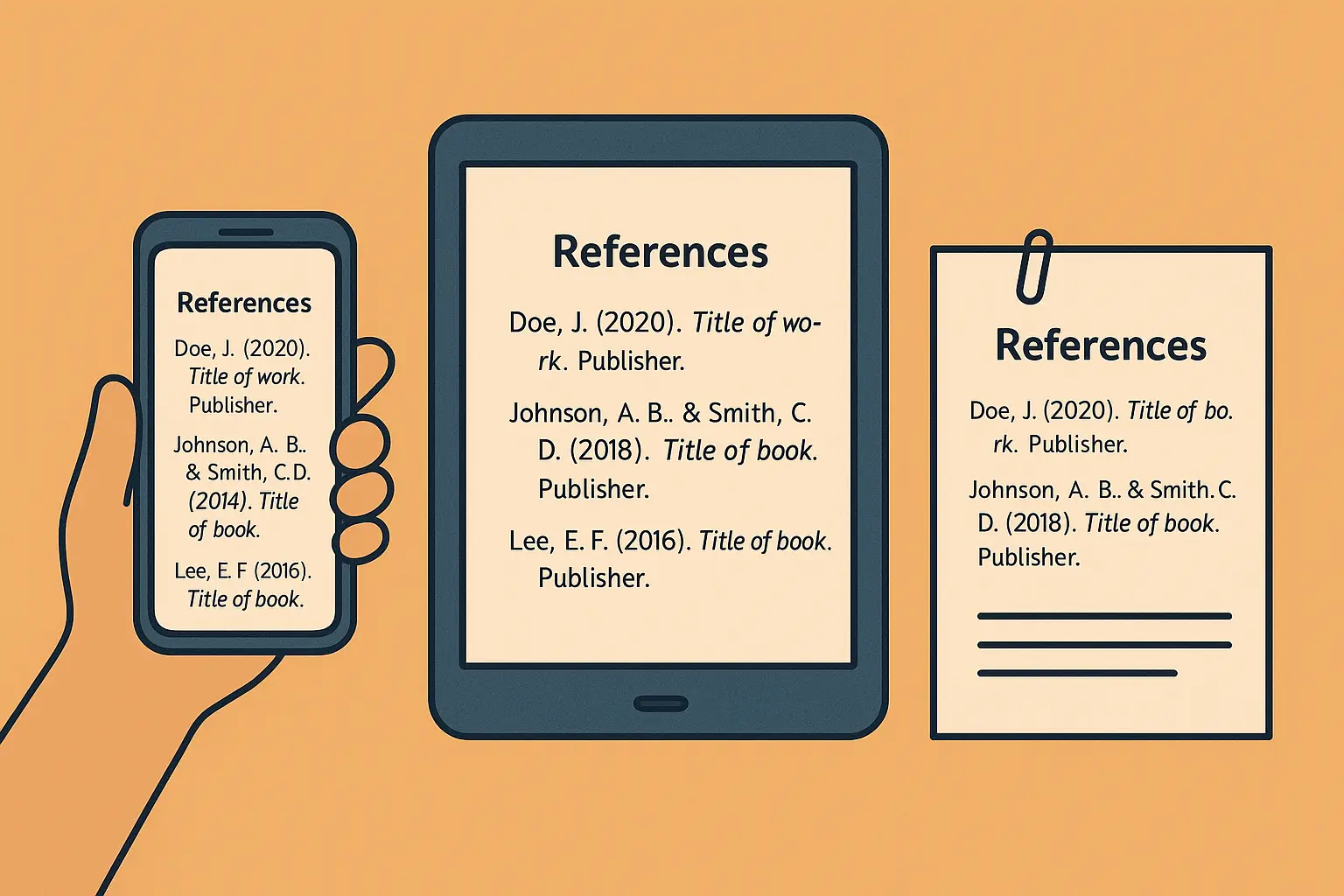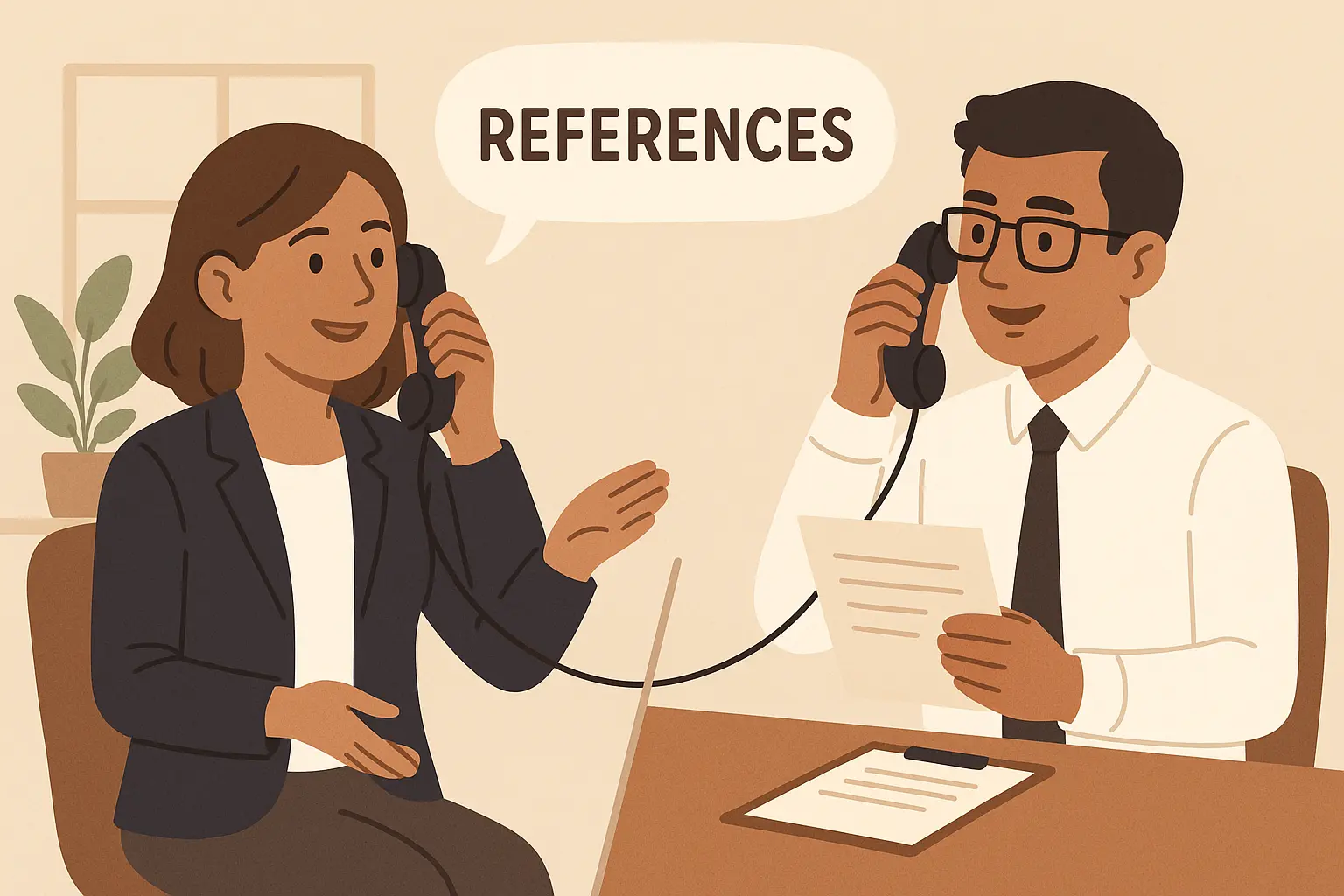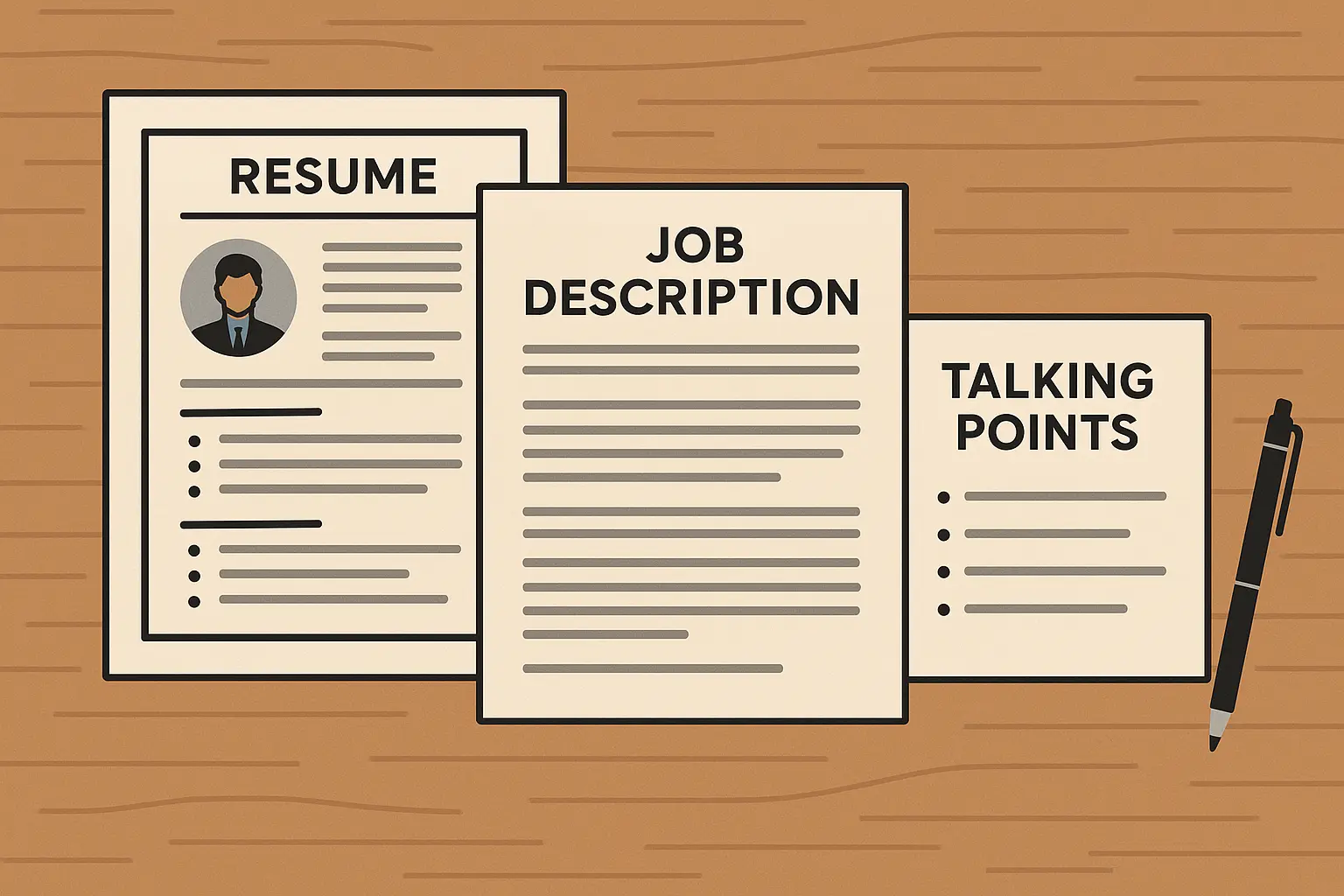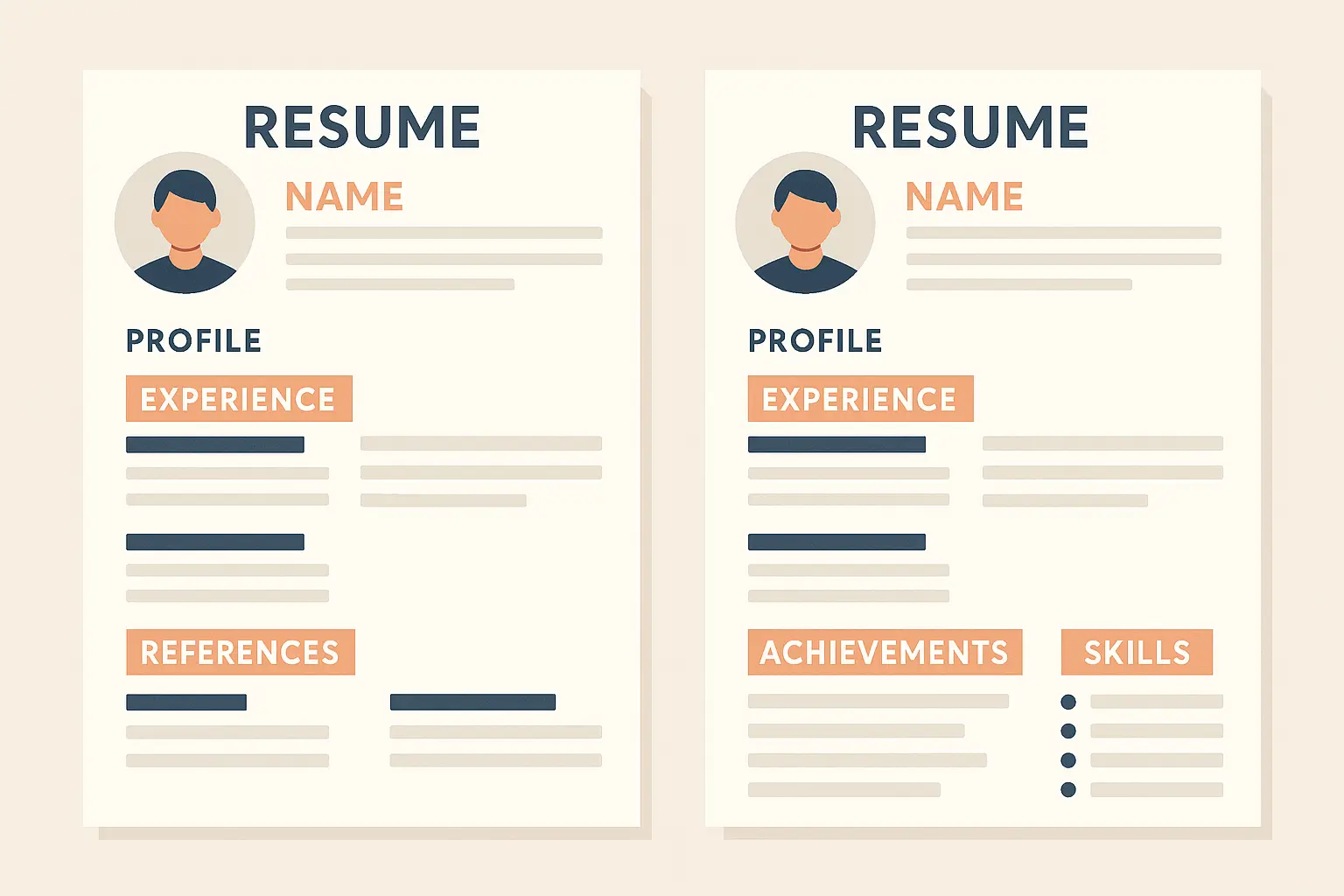How to List References on Resume: The Real Deal on What Actually Works in 2024

Table of Contents
- Do You Even Need References on Your Resume?
- When You Actually DO Need References
- How to Pick References That Matter
- Building a Reference Page That Works
- Managing Your References Like a Pro
TL;DR
- Skip the references on your resume – use that space for achievements that actually sell you
- When you need references, pick people who know your actual work, not just your character
- Create a separate reference page that looks as good as your resume
- Always ask permission first and keep your references in the loop
- Different industries play by different rules – know yours before you apply
Do You Even Need References on Your Resume?
Here’s the thing – most employers don’t even look at references until they’re ready to hire you. I remember when every resume had “References available upon request” at the bottom. Thank god those days are over.
Today’s hiring works differently. Companies ask for references only after they’ve decided you’re worth their time. Understanding when references actually matter helps you avoid wasting precious resume space while being ready when it counts. Knowing how to list references on resume documents the right way is just as important as knowing when to include them at all.
The key is knowing what your industry expects and timing your reference strategy right. According to research from Cultivated Culture, references typically come into play during final interview rounds rather than initial applications, with some companies requesting five or more references while others don’t bother checking them at all.
When you know how to handle references properly, you can focus your resume on what really matters – your achievements and qualifications. Understanding professional resume format expectations helps you make smart choices about what goes on your resume versus what stays off.
Why “References Available Upon Request” Died
That line became as useful as a fax machine. It tells employers absolutely nothing while eating up space you desperately need for real content.
Here’s what hiring managers already know – you have references. Writing “I have references” is like writing “I have a phone number” at the top of your resume. Everyone assumes you can provide references if asked.
For job seekers wondering how to list references on resume formats today, the key is brevity and professional relevance. Recent guidance from “How to Write a CV in 2025” EUToday confirms that modern CVs should include a line stating “References available upon request” at the end to signal availability without wasting valuable space, but only as a brief acknowledgment rather than a focal point.
Modern resumes focus on impact and results, not placeholder text that adds zero value.
When Industries Actually Care About References Upfront
Some fields still want references immediately. Healthcare, teaching, and government jobs deal with public safety and trust issues, so they start checking references early.
If you’re in these fields, have that reference page ready from day one. These industries can’t afford to wait until the end to verify you’re not a liability.
| Industry | Reference Timing | Typical Number Required | Special Requirements |
|---|---|---|---|
| Healthcare | Initial Application | 3-5 | Professional licenses verification |
| Education | Initial Application | 3-4 | Character references often required |
| Government | Initial Application | 5+ | Security clearance considerations |
| Finance | After 2nd Interview | 3-4 | Regulatory compliance focus |
| Technology | Final Round | 3 | Technical skill validation |
| Retail/Service | After Interview | 2-3 | Availability and reliability focus |
For everyone else? References happen during final interview rounds, not upfront. Smart job seekers prepare their reference materials but don’t submit them unless specifically asked.
How Job Application Systems Handle References
Here’s what most people don’t know – those online job application systems file your references separately from your resume anyway. So why waste resume space on them?
ATS software processes reference information differently than resume content, storing it in separate database fields. This means your reference page needs clean, simple formatting that both software and humans can read easily. If you’re unsure how to list references on resume applications for ATS systems, keep the formatting simple and consistent with your resume.
Creating an ATS-friendly resume ensures your application materials pass initial screening while keeping your reference page ready for human review.
When You Actually DO Need References
References aren’t about finding people who like you – they’re about selecting people who can speak to your actual work performance. I’ve seen too many people choose references based on friendship rather than professional relevance.
The best references combine three things: authority (they held senior positions), relevance (they worked with you recently), and knowledge (they saw your actual work). Think from a hiring manager’s perspective – who can answer the questions they actually care about?
Research from Cultivated Culture recommends five professional references as the optimal number if you can provide them, giving employers choices while showing you have solid range of people willing to vouch for you, with a minimum of three required for most positions.
The Reference Hierarchy That Actually Matters
Your immediate supervisor carries the most weight because they managed your daily work and can speak to your reliability. Senior colleagues who worked closely with you come next – they know your collaboration skills and technical abilities.
Peers and people who reported to you can provide valuable perspectives but typically carry less influence in hiring decisions.
Why Your Boss’s Opinion Matters Most
Former managers know how you actually perform under pressure. They’ve seen you handle difficult clients, tight deadlines, and challenging projects. When a hiring manager calls your previous supervisor, they’re getting the real story.
Sarah, a marketing coordinator, chose her former direct manager who supervised her during a major product launch. When the hiring manager called, her manager could speak specifically about how Sarah managed a $50,000 campaign budget, coordinated with five different departments, and delivered results 15% above target despite tight deadlines. That’s the kind of specific, results-focused reference that actually moves the needle.
Building References That Cover All Your Bases
Think about what story you want your references to tell together. Maybe one person speaks to your technical expertise, another to your project management skills, and a third to your client relationship abilities.
Instead of choosing three similar references, pick people who can speak to different strengths and experiences. This gives hiring managers a complete picture of what you bring to the table.
Match References to Job Requirements
When I’m targeting a project management role, I make sure one of my references managed me during a major project. For sales positions, I include someone who witnessed my client relationship skills.
The most effective references align with your target position’s specific requirements. If you’re applying for a leadership role, include someone who observed your management capabilities.
Reference Selection Checklist:
- At least one direct supervisor who managed your daily work
- One senior colleague who collaborated on significant projects
- One reference who can speak to skills specific to your target role
- All references have current, accurate contact information
- Each reference has agreed to serve in this capacity
- No more than 2-3 years have passed since working with each reference
Cross-Department References Show Your Range
References from other departments prove you can work beyond your immediate team. That marketing colleague who partnered with you on product launches can speak to your cross-functional collaboration skills.
The IT manager who worked with you on system implementations can discuss your technical adaptability. These references demonstrate your ability to work across organizational boundaries and communicate effectively with diverse teams.
Building a Reference Page That Works
Match your reference page header to your resume header exactly. Same fonts, same colors, same layout. It might seem small, but consistency shows professionalism and attention to detail.
Hiring managers notice when your materials look cohesive versus thrown together. Your reference page should work as a standalone document that complements your resume while providing complete contact information and context for each reference. This is where understanding how to list references on resume documents correctly makes a huge difference.
Understanding resume format secrets ensures your reference page complements your overall application package effectively.
Contact Information That Actually Works
Include everything a hiring manager needs to reach your references quickly. Current job title, company name, direct phone number, and professional email address. I learned this the hard way when a potential employer couldn’t reach one of my references because I had their old company information.
When figuring out how to list references on resume pages, make sure to include full professional details rather than vague titles.
Instead of just listing “John Smith – Former Manager,” use this format: “John Smith, Senior Operations Director, ABC Manufacturing Inc. | Direct: (555) 123-4567 | john.smith@abcmfg.com | Supervised my work on inventory management systems, 2022-2024.”
Context Without the Life Story
Keep relationship descriptions short and relevant. “Direct supervisor at ABC Company, 2022-2024” tells the story without unnecessary details. You want to provide context, not write a novel about your working relationship.
Reference Context Template:
[Name], [Current Title]
[Current Company]
Phone: [Direct Number] | Email: [Professional Email]
Relationship: [How you worked together, duration]
Context: [1-2 lines about relevant projects or skills they observed]
Make It Work Everywhere
Keep both PDF and Word versions ready. PDFs maintain formatting perfectly, but some online application systems specifically ask for Word documents. Being prepared with both formats saves time and prevents formatting disasters.
Your reference page needs to look professional whether it’s viewed on a phone screen, computer monitor, or printed on paper. Simple, clean formatting works better than complex designs that get jumbled on mobile devices.
According to recent guidance from the “University of Cincinnati”, some programs specifically request references on resumes while others prefer separate documents, emphasizing the importance of following specific application requirements and maintaining professional formatting across all materials.
| Format Element | Desktop Optimal | Mobile Optimal | Print Optimal |
|---|---|---|---|
| Font Size | 11-12pt | 12-14pt | 11pt |
| Line Spacing | 1.15 | 1.2 | 1.0 |
| Margins | 0.75″ | 0.5″ | 1.0″ |
| Contact Layout | Horizontal | Vertical Stack | Horizontal |
| File Format | PDF preferred | PDF/Word both | PDF preferred |
| Column Layout | 2-column OK | Single column only | 2-column OK |
Managing Your References Like a Pro
Always start with a phone call or in-person conversation when possible. Email works too, but personal contact shows respect and allows for immediate feedback. I explain what type of roles I’m targeting and ask if they’d be comfortable serving as a reference.
Their enthusiasm level tells me everything I need to know. Successful reference management means ongoing relationship maintenance, proper communication, and strategic preparation throughout your job search.
Understanding common second interview questions helps you anticipate what employers might ask your references about your performance.
How to Actually Ask Someone
“Hi Sarah, I’m actively job searching for senior marketing roles and wondered if you’d be comfortable serving as a reference. You supervised my work on the Johnson campaign, so you could speak to my project management and client relationship skills. Would you be open to this?”
Direct, specific, and respectful. Don’t beat around the bush or make them guess what you’re asking for.
Quality matters more than quantity. According to Cultivated Culture, candidates should aim for three to four references who know them well and will provide positive feedback about their professional abilities and character, especially important for those without extensive professional experience who may need to consider mentors, professors, or close personal friends.
Keep Them in the Loop Without Being Annoying
Send brief updates when you have interviews scheduled or when your job search focus changes. Something simple works: “Heads up – I have a final interview with XYZ Company next week, so you might hear from them soon.”
Keep it short and informative. They don’t need your life story, just relevant updates that help them prepare for potential calls.
Reference Update Template:
Subject: Quick Update - [Company Name] Interview
Hi [Name],
Hope you're doing well! Just wanted to give you a heads up that I have a final interview with [Company Name] next week for their [Position Title] role. They mentioned they'll likely be contacting references soon, so you might hear from [Hiring Manager Name] or someone from their HR team.
The role focuses heavily on [relevant skill/experience], so if they ask, you could mention our work on [specific project] where we [brief result].
Thanks again for being willing to help!
Best,
[Your name]
Give Them What They Need to Shine
Always send your references an updated resume and the job description for positions where you’re a finalist. Include a brief note highlighting which of your experiences or skills might be most relevant to discuss.
Before her final interview, Maria sent her references a one-page brief that included: the job description, her updated resume, and a note saying “They’re particularly interested in data analysis skills – you could mention the customer segmentation project where we increased conversion rates by 23%.” Her reference was prepared and gave a targeted recommendation that directly addressed the employer’s needs.
Providing references with well-crafted resume summary examples helps them understand your key value propositions and speak more effectively about your qualifications.
Industry-Specific Rules You Can’t Ignore
Government jobs almost always want references immediately. They’re dealing with security clearances and public trust issues, so they start the reference process early. If you’re applying for federal or state positions, you’ll need references from the beginning.
For government positions, using a specialized federal resume template ensures you meet specific formatting requirements while properly incorporating reference information.
Executive searches operate differently too. Search firms often want references earlier in the process, and they conduct more thorough reference checks. Senior-level candidates should be prepared for more extensive reference requirements throughout the entire process.
Freelancers and contractors play by different rules entirely. Client testimonials might work better than traditional references, and you might include brief quotes on your resume or portfolio. The key is proving your value to potential clients rather than following traditional employee reference protocols.
The Bottom Line
Every line on your resume should work hard to sell you. References don’t sell you – your achievements do. Use that space to highlight another major accomplishment or key skill instead of listing reference contact information that employers probably won’t need until later.
Resume real estate is precious, especially for one-page formats. Those three lines you’d use for references could instead showcase another major achievement with quantified results. Which sells you better – contact information for references or proof that you increased sales by 30%? The real trick is knowing how to list references on resume materials only when they truly add value.
Most online job applications have separate reference sections anyway. You’ll upload your resume in one field and enter reference information in another. This setup makes on-resume references completely unnecessary and potentially redundant.
Reference management doesn’t have to be complicated, but it does require strategy. Pick people who can speak specifically to your work performance and professional growth. Keep your reference relationships strong through regular communication, and always ask permission before listing someone.
With the right approach, your references become powerful advocates who can help seal the deal when employers are making their final decisions. Just don’t waste valuable resume space on them when that space could be working harder to get you the interview in the first place.
Resume Builder IQ’s comprehensive platform addresses the common challenge of creating cohesive application materials by offering integrated resume and reference page creation tools. Our AI-powered system helps you make strategic decisions about reference inclusion while ensuring your entire application package maintains professional consistency and ATS optimization.


